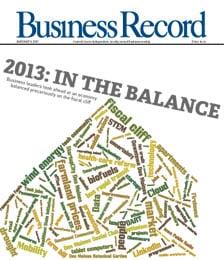Report: Job growth to precede commercial real estate recovery
A decline in commercial real estate fundamentals will slow this year, followed by a sluggish recovery for the industry beginning in 2011, Grubb & Ellis Co. said this week.
According to the real estate services and investment firm’s 2010 Real Estate Forecast, most property types will bottom out near the end of 2010.
“The national economy has begun a slow and cautious recovery, but the labor market, which often lags the broader economy, will turn around only gradually with sustained improvement unlikely before the second half of 2010,” said Bob Bach, senior vice president and chief economist. “Because commercial real estate lags the labor market, it still has a ways to go before reaching its own low point.”
Office, retail and multi-housing, the sectors most dependent on a significant increase in job growth for a robust recovery, will be the slowest to bounce back.
According to the report, the national office market’s vacancy rate is expected to reach about 19 percent by the end of 2010, and Grubb & Ellis forecasts weak demand for retail until 2011. Job growth is also key for recovery in the multi-housing sector.
“Early 2010 may see a few isolated months of hiring, but sustained growth in employment is unlikely before the second half of the year,” Bach said.
The industrial sector, which is less dependent on job growth for recovery, is expected to rebound faster. But vacancy rates in that sector are still expected to reach 11.4 percent by the end of 2010, 70 basis points higher than year-end 2009.
As banks and other lenders work their way though distressed commercial assets, commercial property sales volumes could increase 20 to 30 percent over 2009 levels, the report indicated. And the likelihood that banks will begin writing off their losses on troubled assets in 2010 means that the capital accumulating on the sidelines will start being deployed and many highly leveraged properties that lack the necessary capital to attract tenants will transfer to new ownership.
Commercial real estate prices, which are down 40 percent from their peak in October 2007, may decline further to meet buyers’ expectations.
“Many have called commercial real estate ‘the next shoe to drop,’ but that’s really an exaggeration,” Bach said. “It implies that commercial real estate could wreak damage on the financial system equivalent to the subprime residential mortgage losses.” But Bach said the scenario is “highly unlikely” considering that the value of outstanding commercial mortgages is only a fraction of the value of outstanding residential mortgages.
“Nevertheless, losses will mount over the next several years,” he said. “If banks aren’t lending because they’re coping with losses in their real estate portfolios, this could impede the economic recovery.”
“The good news is that the free fall we saw in 2009 is over, and the future is more certain, giving owners and users of real estate the confidence to begin making decisions again.”







